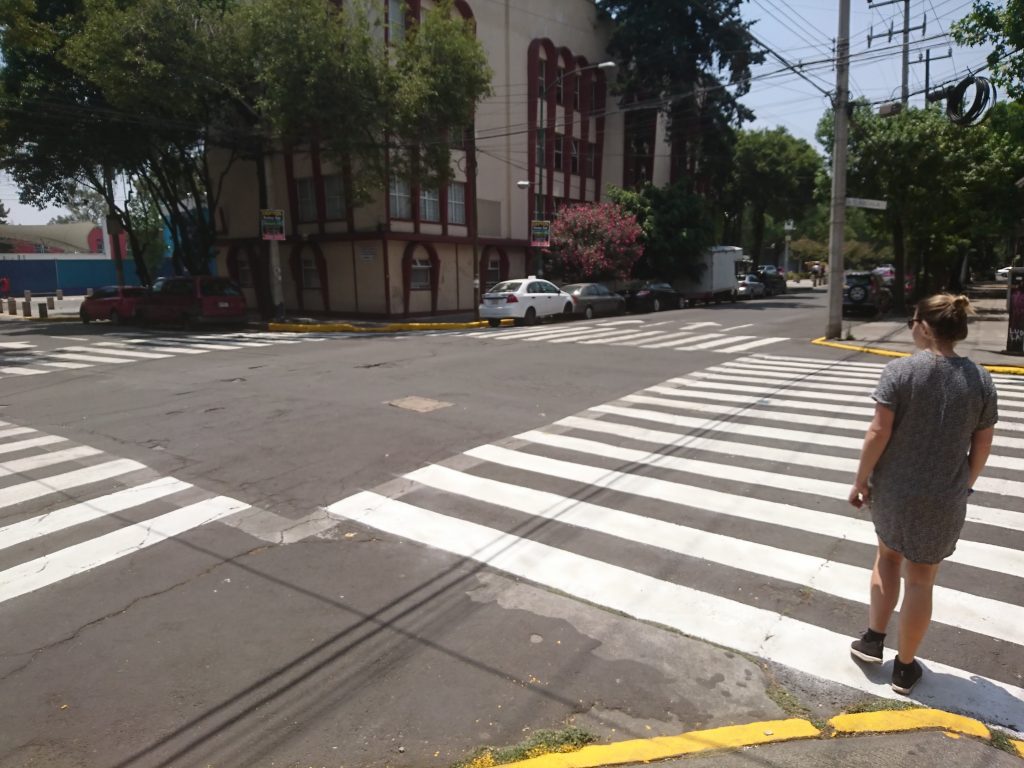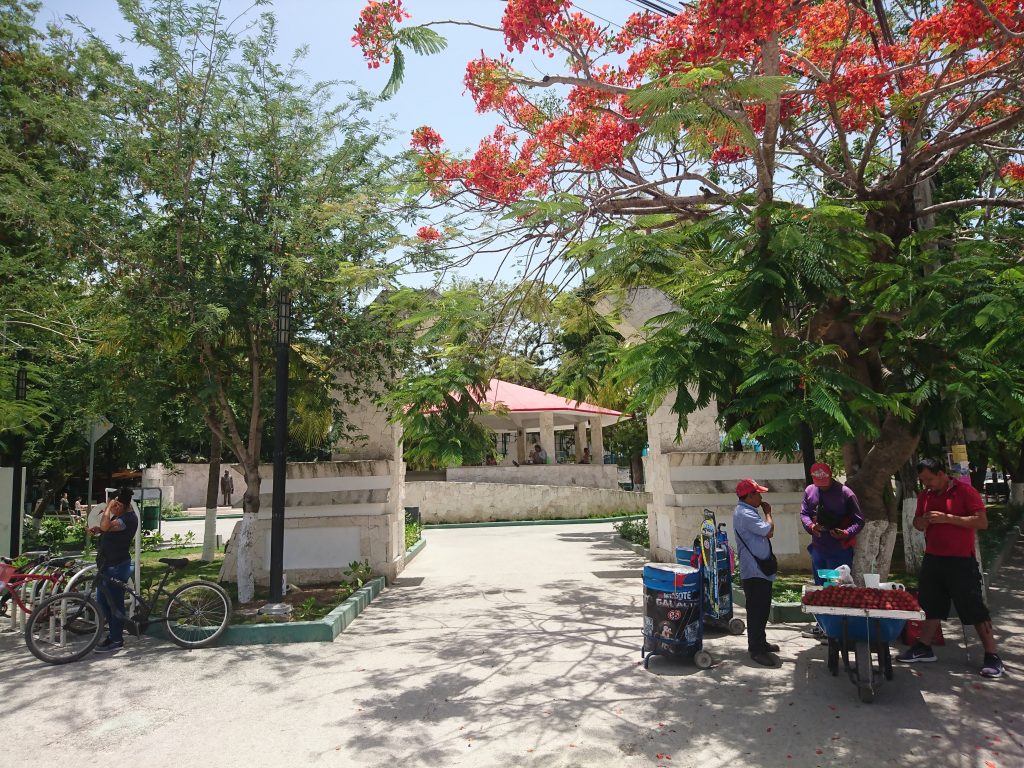Like most countries walking in Mexican cities can be both a joyful and negative experience at the same time. This article focuses on assessing the pedestrian experience in Mexican cities through site visits, experiences and interviews with users and practitioners in sustainable transport in Mexico. Starting with the less pedestrian friendly elements but emphasising that Mexican Cities are fighting back for the pedestrian.
Street and urban design has traditionally favoured the car

- Influence from USA, particularly in the early development of the Mexican Highway Code and street design up until the 2000s heavily favoured the car.
- A key impact of this has been the institutionalisation of vehicle lane widths of 3.5m – leading to wide streets that are difficult for pedestrians to cross, and that encourage high vehicle speeds.
Pedestrian and walking infrastructure in Mexican Cities can also be a mixed bag
On one side very car dominated streets can be found with:
- Wide lanes and often lengthy pedestrian crossing points;
- Sometimes little time for pedestrians to cross the roads;
- One way traffic on large multi-lane roads leading to high speeds;
- Often only signals for vehicles; lack of pedestrian priority and dedicated signals at crossings resulting in needing to be very assertive as a pedestrian to cross roads.


In addition, often pedestrian infrastructure and accessibility is lacking in certain aspects:
- Footway width and quality can be inconsistent leading to low pedestrian comfort levels
- Holes and obstacles in footways and broken paving making it difficult for pedestrians to use.

However, there are also many positive and interesting elements to the walking environment and infrastructure in Mexico’s cities that should be championed, and that other countries and cities can learn from highlighted in 5 focus areas below:
1) Pedestrian safety, space & priority through street layout
- One way grid systems can be found in cities across Mexico. The one-way street layouts can make it easier for pedestrians to cross the road when streets are only one lane wide and crossing paralell with traffic – as long as vehicle speeds are low, sightlines are maintained and priority is ensured for pedestrians to ensure safe crossing.
- Informal Zebra crossing markings used at most major intersections and crossing points leads to pedestrian priority being inferred and turning vehicles yielding to people even without pedestrian signals (however pedestrian priority could be improved with signals);

- Use of build-outs at junctions and on streets to increase pedestrian space and priority ahead of car dedicated space.




- The introduction of Bus Prioirty lanes in Mexico City promotes less car use and faster public transport networks which are key for walking friendly cities.
“Metro bus provision in Mexico led to reductions in lane widths showing that we can reduce lane width. Which highlighted that there is political will to improve some aspects of street design around people.”
Yazmin Luz, Founder of Camina
2) Mexico’s successful use of tactical urbanism and people focused informal and flexible street space
- Frequent use of street animation and tactical urbanism is more easily implemented than in other countries. For instance, Camina’s tactical urbanism projects in Mexico City to increase pedestrian space at traditionally large junctions and crossings.

- Widespread use of timed road closures and temporary road filter schemes to promote and encourage people focused activities, such as in Valladolid, Merida and Mexico City.



3) Pedestrian priority street networks and street furniture
- Filtered permeability and shared space on roads in downtown high profile streets and areas with high pedestrian volumes
- Pedestrianised corridors and networks that are green, shaded and active and that lead in and out of the historic town centres and large pedestrianised squares (Zocalos) such as in San Cristobal, Oaxaca and Comitan
- Due to high pedestrian volumes and informal street vendors pedestrian comfort levels can be reduced at peak times.



- Providing a variety of seating types for people e.g. Hammocks, benches and informal seating options promotes more sticking features in public realms
- Central pedestrian focused squares can be hives of urban activity that is both commercially and community focused – promoting economic benefits but also places for people to come together

4) Active, colourful, exciting and attractive streets
- Informal sellers and active frontage on main streets provide eyes on the streets and active people focused street use – as long as it doesn’t take up footway space.
- Street art, creative pedestrian priority and art competitions in cities promotes variety and interest on the street for people



5) Green streets and pedestrian corridors

- Mexican cities make use of their often warm climate to create green and shaded walking corridors through both formal and informal planting schemes.
- Find out more about how Mexico is also utilising its natural and green assets in its cities and towns.
In summary – there is a long way to go to reverse the car dominated street design and culture in Mexican cities. However, there is an overwhelming amount of positive examples from across the country of innovative urbanism, street design and place making that are working to improve the ‘Peatonal’ experience and that can and should inspire the world.
Published August 2019

